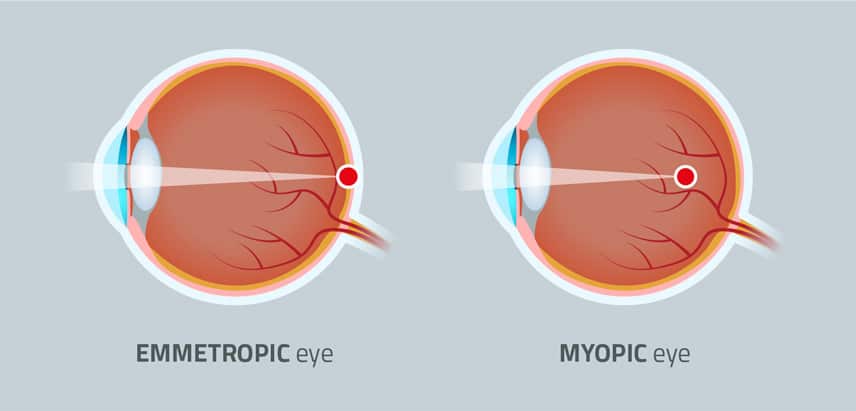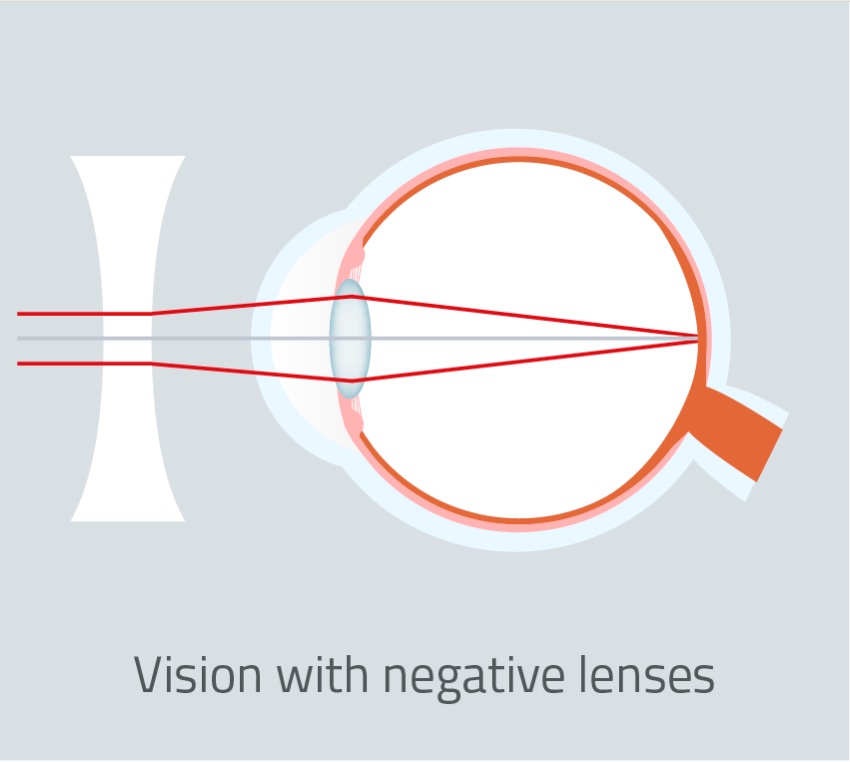Refractive abnormality: myopia
We are able to see objects around us properly and clearly thanks to the process of focusing light rays that happens into the retina of our eye.
We can see distinct and focused images when we focus light rays exactly on the photoreceptors of the retina, that is, on the retina’s cones and rods (emmetropic eye). When this does not happen, we encounter visual defects such as myopia (nearsightedness) and hyperopia (farsightedness).
Myopia: what is it?
Myopia is a visual defect that prevents us from seeing clearly the objects located at a long distance, making them blurry.
The name myopia derives from the Greek word myo, which means to “close”. The eyes are the one that close, with an involuntary or voluntary movement, when they try to increase the clearness of vision.
Myopia is an ametropia, that is, a refractive error of the eye: when light rays coming from a distant object, instead focusing on the retina they focus in front of it and the image appears blurry.
A nearsighted person can also have other visual defects: they can be both nearsighted and astigmatic, or nearsighted and presbyopic.
A person cannot be nearsighted and farsighted at the same time.

Myopia: symptoms
Nearsighted people are unable to see distant objects clearly, but they are able to see objects close by.
In particular, myopic people may:
— need to half-close their eyes to see better from distant;
— suffer from eye strain and fatigue;
— suffer from migraine.

Myopia: causes
Myopia can occur:
— as a result of an excessive length of the eyeball – this is defined as axial myopia;;
— as a result of an excessive curvature of the cornea – this is defined as refractive myopia;
In both cases, ophthalmic lenses and/or contact lenses must be created to compensate the visual defect, and specialists measure the degree of correction required in diopters.
Up to -3.00 diopters, myopia is considered low or simple.
From -3.00 to -6.00 diopters, myopia is moderate.
Over -6.00 diopters, myopia is considered high.
Different types of myopia
We are currently aware and able to classify different types of myopia, which are mainly divided between:
— congenital myopia, which is present at birth or found at preschool age;
— acquired myopia, which is not present at birth but it develops over time;
How should myopia be corrected?
Refractive errors in nearsighted individuals are corrected with negative ophthalmic lenses, which diverge the light rays observed directly on the retina, allowing them to see clear and focus images.


Thanks to the new FreeForm technologies, today we can achieve excellent aesthetic results, even in cases of high myopia. Nonetheless, is still responsibility of the end users to choose the best correction tool suitable to their lifestyle.